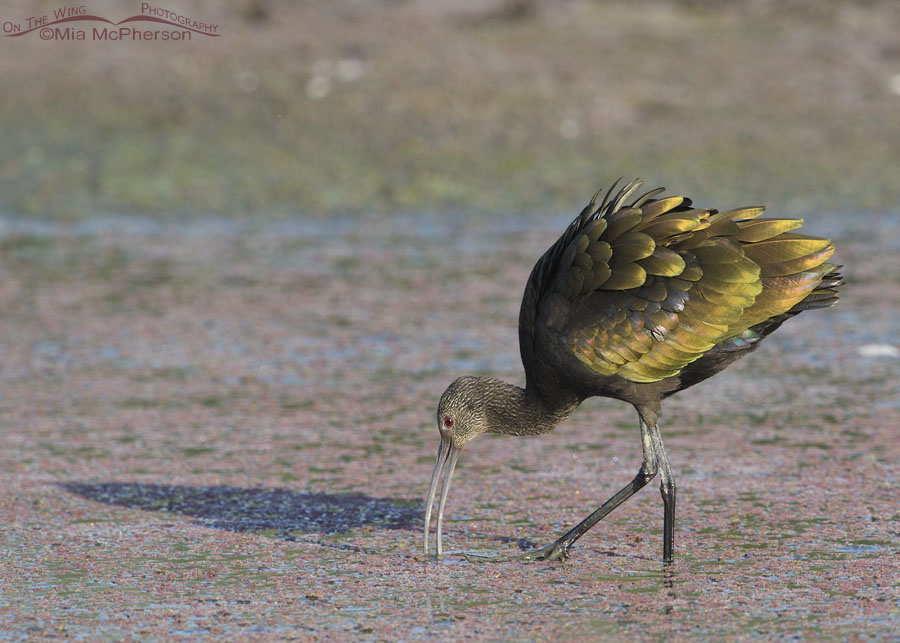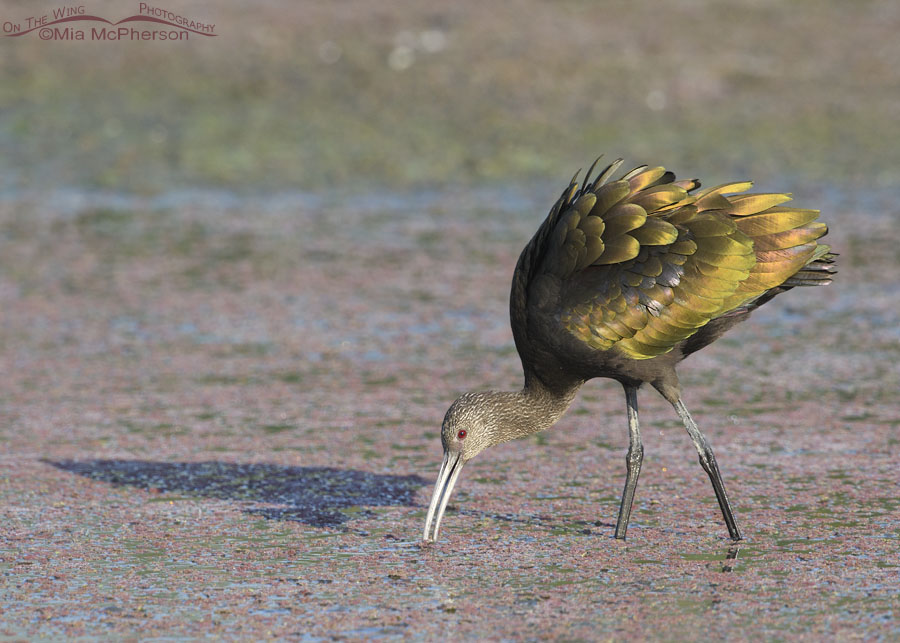 White-faced Ibis glowing in morning light – Nikon D500, f7.1, 1/1000, ISO 640, -0.3 EV, Nikkor 500mm VR with 1.4x TC, natural light
White-faced Ibis glowing in morning light – Nikon D500, f7.1, 1/1000, ISO 640, -0.3 EV, Nikkor 500mm VR with 1.4x TC, natural light
I took a photos of a White-faced Ibis glowing in the morning light at Farmington Bay on Monday. This is why I am out and photographing so early in the morning. A half an hour later and the light wouldn’t have lit up the feathers of this ibis and caused them to glow like burnished gold and copper.
Why? Because the sun would have been higher in the sky and at a different angle.
Since I was at the pond early enough I had perfect light on this foraging White-faced Ibis. Additionally, the position of the bird couldn’t have been better and I knew that as I took photo after photo of this ibis.
I could see the feathers of the ibis glowing through my viewfinder.
 White-faced Ibis with its feathers aglow – Nikon D500, f7.1, 1/1000, ISO 640, -0.3 EV, Nikkor 500mm VR with 1.4x TC, natural light
White-faced Ibis with its feathers aglow – Nikon D500, f7.1, 1/1000, ISO 640, -0.3 EV, Nikkor 500mm VR with 1.4x TC, natural light
White-faced Ibis can appear plainer, drabber, and darker in different lighting. Not this ibis. Its bright glimmering feathers mesmerized me as I photographed the bird foraging in the duckweed covered pond.
In total, I took 80 images of this White-faced Ibis and all of them showed these glowing iridescent feathers until the last three photos. That was when the ibis turned its body to look more directly at me.
It won’t be long before most of the White-faced Ibis that have spent their breeding season here start to migrate to their wintering grounds. Not all of them leave. A few will spend the winter here in northern Utah in the marshes. I have seen this species every month of the year since I moved here in 2009.
Life is good.
Mia
Click here to see more of my White-faced Ibis photos plus facts and information about this species.


Gorgeous, Mia! Is all of Farmington Bay open now? The last time I was there they had the back area gated off.
Thanks Michael. Yes, the gate is open south of Goose Egg Island.
Stunning!
You captured the colors nicely!
Gorgeous photos!
Beautiful. And yet another reason to get up early.
That plumage reminds me of mother-of-pearl.
Outstanding photograph with that very special light!
Easy to see why its cousin was named “Glossy”.
Perfectly stunning! What a treasure!
Another amazing image! Great way to start my day. Thank you.
Glorious capture of superb lighting. Sure glad you got up so early and are so generous with your rewards.
You’re right, you got him when he was really handsome .. great shot and lesson!!